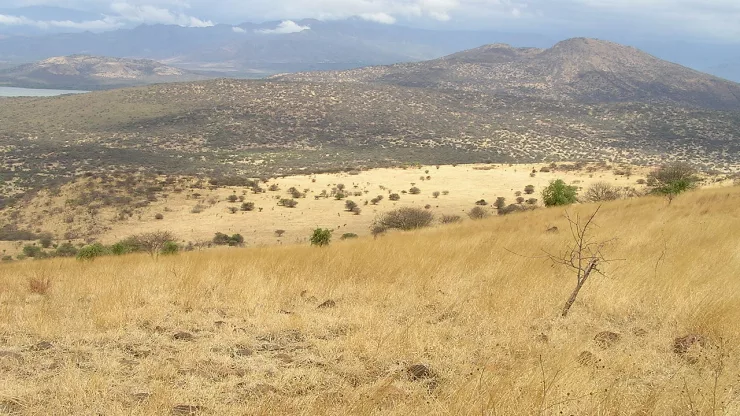Jump to Section
Discovering the Pyrenees National Park
If you are an outdoor enthusiast with a love for nature, then the Pyrenees National Park in France is a destination you must add to your bucket list.
The park is located in the southwestern region of France, and it covers an area of about 458 square miles.
The park boasts a rich ecosystem filled with a diverse range of flora and fauna.
The park is home to a variety of wildlife, including some rare and endangered species.
A Dive into the Rich Ecosystem of the Park
The Pyrenees National Park is a protected area that has been set aside to preserve the natural beauty of the region.
The park is a haven for wildlife, with an ecosystem that is rich and diverse.
The park is home to over 4,000 species of plants and animals, with some of them being endemic to the region.
The park is divided into two zones: the core zone and the peripheral zone.
The core zone is strictly protected, while the peripheral zone is open to the public.
The park is home to three main ecosystems: the alpine, the subalpine, and the forest.
Each ecosystem has its unique characteristics and is home to a variety of plants and animals.
The alpine ecosystem is characterized by rocky slopes, scree, and glaciers. The subalpine ecosystem is characterized by coniferous forests, grasslands, and meadows.
The forest ecosystem is dominated by beech and fir trees.
Flora and Fauna of the Pyrenees National Park
The Pyrenees National Park is home to a diverse range of flora and fauna.
Some of the notable plants in the park include the Edelweiss, the Pyrenean Lily, and the Yellow Gentian.
The park is also home to a variety of animals, including the Pyrenean Ibex, the Brown Bear, and the Golden Eagle.
Meet the Wildlife of the Pyrenees Mountains
The Pyrenees National Park is home to a variety of wildlife.
The park is home to some rare and endangered species that are not found anywhere else in the world.
Visitors to the park can expect to see some of the following animals:
- Pyrenean Ibex
- Brown Bear
- Chamois
- Marmot
- Snow Vole
- Golden Eagle
- Bearded Vulture
- Griffon Vulture
The park is also home to some exotic species that have been introduced into the park, such as the Alpine Ibex and the Red Deer.
A Close Encounter with the Pyrenean Ibex
The Pyrenean Ibex is a species of mountain goat that is native to the Pyrenees Mountains.
The Pyrenean Ibex was declared extinct in 2000, but thanks to a successful breeding program, it was reintroduced into the park in 2014.
Visitors to the park can now see these magnificent animals in their natural habitat.
The Pyrenean Ibex can be easily identified by its curved horns, which can grow up to 80 centimeters in length.
The Ibex is a sure-footed animal that is adapted to living in the mountains.
It is an agile climber and can be seen scaling rocky cliffs and steep slopes with ease.
Conclusion
The Pyrenees National Park is a fascinating destination that is sure to delight nature lovers and outdoor enthusiasts.
The park is home to a rich ecosystem filled with a diverse range of flora and fauna.
Visitors to the park can expect to see some rare and endangered species, such as the Pyrenean Ibex.
With its stunning landscapes, outdoor activities, and accommodation options, the Pyrenees National Park is a must-visit destination in France.
FAQ
What is the best time to visit the Pyrenees National Park?
The best time to visit the Pyrenees National Park is during the summer months, between June and September.
During this time, the weather is mild, and the park is open to the public.
What are the park’s opening hours?
The park is open from 9 am to 6 pm during the summer months, and from 10 am to 5 pm during the winter months.
What activities can visitors do in the Pyrenees National Park?
Visitors to the park can engage in a variety of activities, including hiking, cycling, horseback riding, and skiing.
There are also guided tours available for visitors who want to learn more about the park’s flora and fauna.
Are there any accommodation options in the Pyrenees National Park?
Yes, there are various accommodation options available in the park, including campsites, lodges, and hotels. Visitors can choose the option that best suits their needs and budget.
Is it safe to visit the Pyrenees National Park?
Yes, the Pyrenees National Park is a safe destination for visitors. The park is well-maintained, and there are park rangers on duty to ensure the safety of visitors.
However, visitors are advised to take necessary precautions when engaging in outdoor activities.
I’m a nature enthusiast and creator of Metro Wilds and have spent years exploring the great outdoors.
With a passion for environmental conservation and sustainability, I have dedicated my career to writing about the beauty and wonders of nature, as well as the threats facing our planet.
Contact me at [email protected] for assistance.





